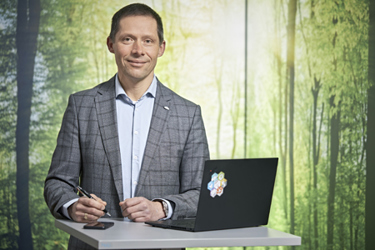What Biotechs Learn From Takeda's Internal Manufacturing Competition

By Louis Garguilo, Chief Editor, Outsourced Pharma

I’d built up enough rapport with Roland Fabris, Site Head, Takeda in Linz, Austria (see part one), so decided to ask:
In some respects, do you feel like a CDMO for Takeda? Where there's a new drug being developed or launched, and you must compete with other facilities in the network, and with CDMOs?
We were talking about his facility in Linz, Austria having won Facility of The Year Award (FOYA) in the category of Operations.
“It’s not so easy to answer,” he says, then pauses before starting again.
“On the one hand, Takeda has some 25 plus manufacturing sites, some specializing in plasma-derived therapies, some biologic products, those mainly doing small molecules, and a site for vaccines.
“You could say we are an internal CDMO, because we serve other business units as our clients. For example, we serve the biologic operating business unit for its products, and we’ll also do a plasma-derived product or a water syringe for a vaccine.”
“And yes,” he adds, “we must be competitive against external facilities. Keep delivering and continuously improving to be competitive.”
“If I were not cost competitive, for example, my upper management would not allow a premium just to be internalized. So, we compete hard. We demonstrate we can compete with external CDMOs.
“To be clear, we still need and appreciate external manufacturers. In fact, for most of our products we have dual sourcing, and it is most likely one internal and one external location.
I’ve two reasons to introduce this segment of our dialogue to readers.
First is to present the flip side to negative sentiments from biotechs about working with larger CDMOs who serve bigger pharma customers. Biotechs lack leverage, and may be relegated as less important customers.
However, consider what a major confirmation of ability it is for a CDMO to become the preferred partners of Big Pharma. It is much more than about capacity.
It’s a beacon on the fact that CDMO has been thoroughly vetted, compared and contrasted, audited and accepted as if not the best, one of the best facilities to entrust development and manufacturing work.
If you are considering working with a CDMO serving Big Pharma clients, you can piggyback, if you will, on that larger sponsor’s due diligence.
Second we can counter another bias heard at biotechs who consider hiring professionals previously working at larger developers. The concern is these professionals are less entrepreneur because, for example, they have had resources and other advantages not available to smaller drug developers.
By using Fabris as our example, we can see how competitive inner-Pharma facilities and professionals can be, and the various kinds of relative experiences gained working inside a larger organization.
I’d summit any biotech looking to develop its manufacturing team and prowess in the art of outsourcing to CDMOs would do well to have a Fabris on your team. (Unfortunately, he’s not available!)
Manufacturing Location Selection
Fabris clarifies he’s not in the position to speak specifically about how the larger Takeda organization makes its final decisions on where to place work – be that within its internal network or externally.
Nonetheless, I coax him to providing us a few points of reflection on this very subject.
“Basically, it's quite simple. I’d start by saying like with most other Pharma, you have a list of preferred partners and suppliers. So, this is not a secret,” he says.
“What I know as we are in the midst of competing is that internal manufacturing locations and CDMO organizations need to understand and take seriously the RFP process. That and other methods of communication will capture the capabilities, costs and pricing, quality, regulatory and other aspects of facilities.”
Changing perspective, I’d suggest this also infers the need to carefully evaluate the responsiveness, but also the real technical fit vis-à-vis your initial reach out (RFP).
It’s not like we haven’t heard this before.
But coming from a professional at a parent organization big enough to garner any CDMO’s attention, it shows that even a perceived lack of intent by some CDMOs can be a telltale sight.
Reduce Risk, Improve Reliability
Fabris then moves to another key component to considerations for selection partners.
“For certain important products, it's also a risk-based approach to site selection,” he says.
Of course, very unlike a Takeda, if you have but one product moving to commercial, it’s always deemed an “important product.”
In any case – from many products at a big organization to no current products at a biotech – your aim is for business continuity through any adversity.
That includes plowing through the pandemics, earthquakes and other natural disasters, or catastrophic failures/developments at a certain site, such as a fire, or the discovery of intransient quality issues.
Fabris adds that should you have produced a product on one continent, then perhaps the other source should be on a different continent.
In fact, a key element of the overall philosophy at Takeda includes the strategic use of dual sourcing.
“This is one of the utmost important goals as patient-centric organizations: guarantee that business continuity. Reduce supply or failure risk via your manufacturer selection process,” Fabris says.
Whether you are selecting a manufacturing partner within your internal network, or externally at a CDMO, there are components of overall and specifically assessed risks you must consider.
“But there are always the ‘normal procedures and evaluators’ such as RFP processes, site visits and quality audits and agreements, access to direct records dealing with regulatory authorities, and so on that need to be carefully evaluated,” concludes Fabris.
If you are a biotech looking to adhere to all these components of site and partner selection, you might reevaluate your consideration of outsourcing where pharma already does, taking advantage of their due diligence, and maybe when hiring, bringing in some ex-pharma workers to help.
-----------
Click here for part one of Louis Garguilo’s discussion with Takeda Linz’s Rolan Fabris
